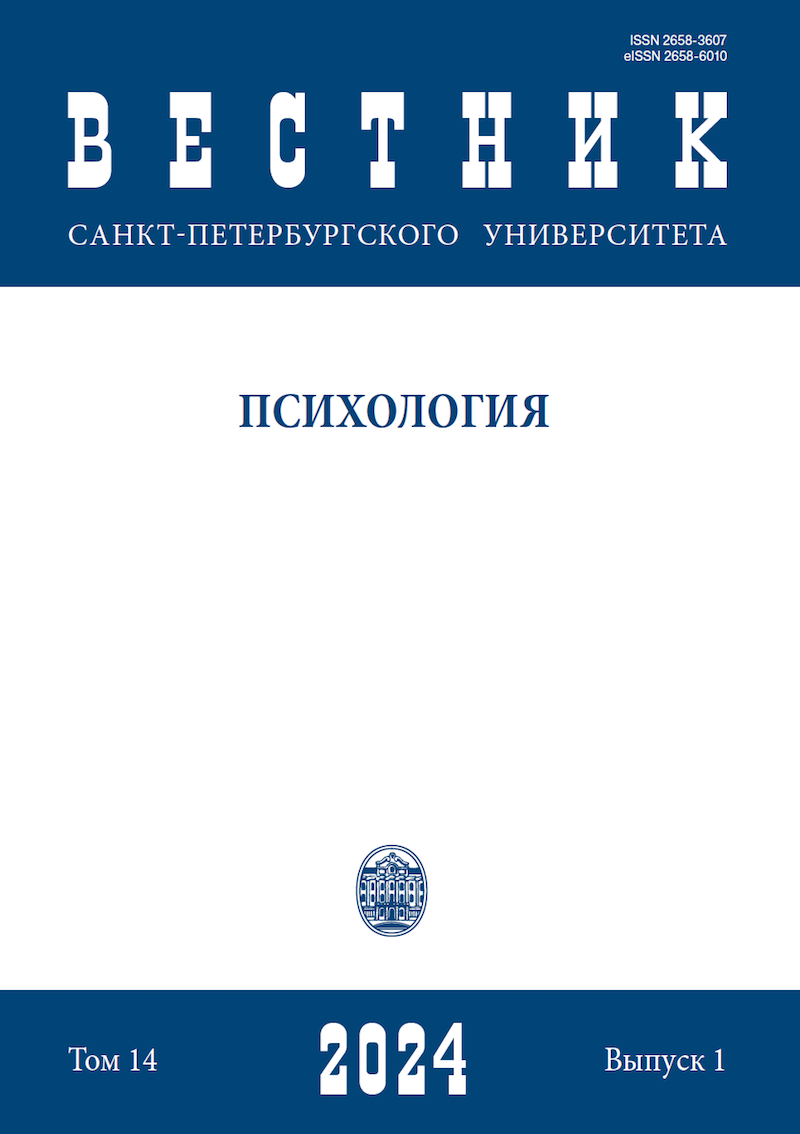To the research of the age identification of an adult
DOI:
https://doi.org/10.21638/spbu16.2024.105Abstract
The article is devoted to the problem of studying the age identification of an adult. The aim of the paper is to study age identification in the periods of early and middle adulthood in relation to subjective age and markers of psychological well-being. Hypothesis: age identification is based on comparing oneself with peers and attitude to age periods close to the age of a respondent; it is characterized by qualitative, typological differences, has a connection with subjective age. The results of two studies conducted on different age groups are presented: the group of early adulthood (N=70, 19–26 years; average age 23.6 years) and the group of middle adulthood (N=60, 27–46 years; average age 34 years). As the main method of age identification research, the method of semantic differential with the next scales was used: strength, activity, evaluation, complexity, orderliness. In the group of early adulthood, the categories “I”, “Peer”, “Childhood”, “Adulthood” were offered for evaluation, in the group of middle adulthood — “I”, “Peer”, “Youth”, “Old Age”. Subjective and ideal age (questionnaire), indicators of psychological well-being (a short version of the C.Riff scale in the adaptation of E.G.Tro shikhina) and life satisfaction (questionnaire of E.Diener in the adaptation of D.A.Leontiev, E.N.Osin) were also measured. Results: with the help of factor analysis, age identification patterns were identified in each of the age groups. They differ by the degree of awareness, the significance of age characteristics in the structure of self-identification and the degree of consistency. In early adulthood, the relationship between the patterns of age identification, chronological and subjective age is not traced, to a greater extent, subjective adulthood is influenced by professional status (job availability). In middle adulthood, multiple significant relationships were revealed, confirming the possibility of studying the content aspects of age identification using a semantic differential.
Keywords:
age identification, age identity, subjective age, early adulthood, middle adulthood, semantic differential
Downloads
References
References
Downloads
Published
How to Cite
Issue
Section
License
Articles of "Vestnik of Saint Petersburg University. Psychology" are open access distributed under the terms of the License Agreement with Saint Petersburg State University, which permits to the authors unrestricted distribution and self-archiving free of charge.




